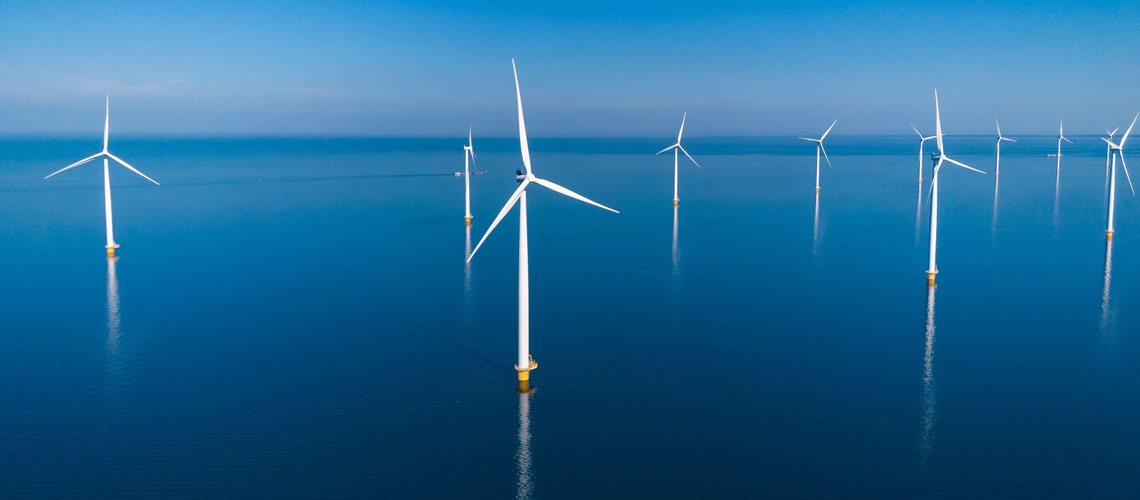
Published
- Sustainability
- Trends
- Tech
Nordic clean-tech takes on the world with export finance
“Navigating turbulent times for Nordic trade” was the motto at GTR Nordics 2022, where a record number of visitors learned about the relevance of Nordic clean-tech in building a climate-resilient future.
At GTR Nordics 2022 in Stockholm, EKN hosted a panel with representative from ECAs, exporters and commercial banks. Marie Aglert, Head of Business Area Large Corporates at EKN, pointed out that the combination of industrial knowhow and flexible export credit agencies in the Nordic region is a positive force in the transition to a climate-aligned society.
“From battery storage, carbon-free steel and power transmission to electric vehicles and oil platform technology, Nordic industry is combining to create a world leading value chain for the transition,” says Aglert and adds, “Backed by innovative, competitive financing from world-class export credits systems, Nordic suppliers and exporters are well positioned to facilitate a zero-carbon future.”
After the session, EKN Magazine met up with Alexandra Bonnet, Director Nordic Export Finance at BNP Paribas and Anders Gerlach Nielsen, Head of Section Renewable Energy & Industry Large Corporates at Norway’s export credit agency Eksfin.
If investing in transitional technology is the business opportunity of a lifetime, why is it still so hard to fund new investments?
“The risk of implementing new technology makes it harder for commercial banks to finance,” says Bonnet and adds, “Also, you need a lot of financing to proceed from the pilot stage to a full-scale rollout, often billions of dollars, to reach a point where new technology has a real impact. If the early stage is financed through equity, subsequent scale-up requires funding from several sources, including development finance and export credits.”
The uncertainty factor surrounding novel technologies also plays into the picture, says Bonnet. “There is the added uncertainty whether a new technology will be around in ten years from now, or if some other innovation or solution will come forward and render the project obsolete and, consequently, unprofitable.”
Nielsen agrees that the level of risk and size of the projects requires several capital sources to collaborate. “As an ECA we do have the financial muscle and the mandate to finance many of these projects, but we need to work together with organisations including commercial banks to arrive at a financial structure that fits the borrower and the individual project.”
What’s required of the financial community?
“Since newly developed climate-aligned technologies are often about new markets, new products and new clients, our customers expect banks and financiers to be involved at an early stage to gain insight into the technology and the supply chains involved,” says Bonnet and points out that to meet these expectations, banks like BNP Paribas are building in-house expertise with in-depth technological skills to better assess the viability and business case of new technologies.
Eksfin and other ECAs also rely on experts to verify the viability of new technology, says Nielsen and offers an example of how knowhow from established industries (even in the fossil business) can be used to implement renewable energy solutions. “Norwegian expertise in offshore technologies used by the oil industry is now being put to use in developing offshore windfarms that can be deployed further out to sea than bottom-fixed offshore wind.”
Norway’s Equinor, for example, is currently building the world’s largest floating offshore windfarm. “It’s a good opportunity for Norwegian exporters to test new technology and build a reference showcase. We already see Norwegian companies taking a key role within the development of this industry.” The world’s first floating wind farm, the 30 MW Hywind Scotland pilot park, has been in operation since 2017, demonstrating the feasibility of floating wind farms that could be ten times larger.
“The Nordics are a true laboratory in the field of clean-tech and a testing hotbed,” comments Bonnet.
The export finance sector has long called for a more flexible approach in the regulations and agreements that govern terms and conditions of loans and guarantees. What changes would you like to see in this respect?
“Longer tenors and the ability to classify more projects as socially and environmentally sustainable would be an advantage, particularly to developing nations,” suggests Bonnet.
Nielsen calls for more flexibility in structuring export guarantees to better match the commercial loans. “If export credit guarantees would mirror the non-linear loan repayment structure that matches payback time, offtake agreements and subsequent cashflow pattern we could accommodate more commercial loans. We hope ECAs can be granted more leeway in deviating from existing OECD agreements in order to better align with commercial participation and flexibility.”
Some examples of non-linear loan terms include balloon payments, bullet structures or loans with, for example, a 10-year tenor and a 25-year profile to better suite investments in renewable energy or green industries.
In concluding, Nielsen calls the collaboration between the Nordic ECAs “crucial”. “We share a flexible approach towards finding new solutions that suit transitional investments. We already see great collaboration between ECAs as well as with multilaterals such as EIB, which is important to secure a satisfactory risk sharing.”
